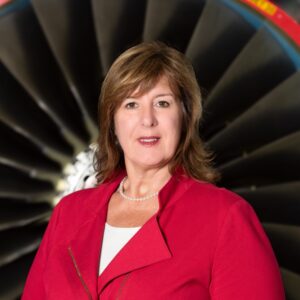The European Green Deal seeks to achieve a 90% reduction in transport emissions by 2050. This is a huge challenge for aviation requiring cutting-edge new technologies and innovations to make this happen. In enabling aviation’s long-term sustainability,novel propulsion technology and propulsion-airframe integration play a key role. A yet untapped source of further efficiency improvements is associated with fuselage wake-filling propulsion integration, i.e., the ingestion and re-energization of the fuselage boundary layer flow by the propulsion system. The positive effect of “wake-filling” on propulsive power requirements has long been known from the field of marine propulsion. Ship propellers are typically located at the aft body of the vessel and operated within the boundary layer flow close to the ship’s body surface. This physical principle is also applicable to airborne propulsion, as the 11 CENTRELINE partners of six European countries have just proven.
The so-called Propulsive Fuselage Concept (PFC) has the potential to play a key role in developing more efficient and less polluting airplanes of the future. The turbo-electric PFC aircraft for 340 passengers produces 4.7% less CO2 emissions compared to an equally advanced conventional aircraft. In addition to the two gas turbines on the wings, an electric fan is located at the aft-fuselage to produce thrust by ingesting and re-energizing the airflow around the fuselage. The PFC configuration features excellent compatibility with other advanced technologies including hydrogen fuel technology. After 3.5 years of research, the consortium of the European-funded CENTRELINE project has managed to complete the proof of concept and experimental validation for this highly promising technology, thereby maturing it to Technology Readiness Level (TRL) 3 and bringing it closer to a possible industrial uptake in the future.
“We have successfully tackled the immediate challenges that are associated with fuselage wake-filling propulsion integration. With the proof of concept performed in CENTRELINE, we have lifted this cutting-edge technology to the next level. Our achievement may represent an important steppingstone on the way to preparing “Propulsive Fuselage” technology for a possible aircraft product development in the future”, says project coordinator Arne Seitz of Bauhaus Luftfahrt e.V. “In order to support any follow-on research and innovation activities, we have devised a roadmap for the PFC aircraft technology towards TRL 6 by the year 2030. As a further enhancement of its innovative potential, we have identified a set of further advanced technologies that feature excellent compatibility with the PFC aircraft configuration. All this was enabled by a great collaborative spirit and excellent individual contributions from the partners in the project.”
The CENTRELINE project stands for “ConcEpt validatioN sTudy foR fusElage wake-filLIng propulsioN intEgration” and was funded with €3.7 million (US$4.4 million) by the European Union under the Horizon 2020 framework program. Coordinated by Bauhaus Luftfahrt, the CENTRELINE project consortium comprised 11 partners from six European countries. Beside Bauhaus Luftfahrt, these included four leading industry partners, namely Airbus Defence and Space, Airbus Operations, MTU Aero Engines, Rolls-Royce and Siemens, as well as four reputable European universities, namely Chalmers University of Technology, Delft University of Technology, the University of Cambridge and Warsaw University of Technology, supported by the management consulting partners ARTTIC Innovation GmbH and ARTTIC SAS. The CENTRELINE consortium was accompanied by a technical advisory board of experts from industrial stakeholders and research organizations.






























